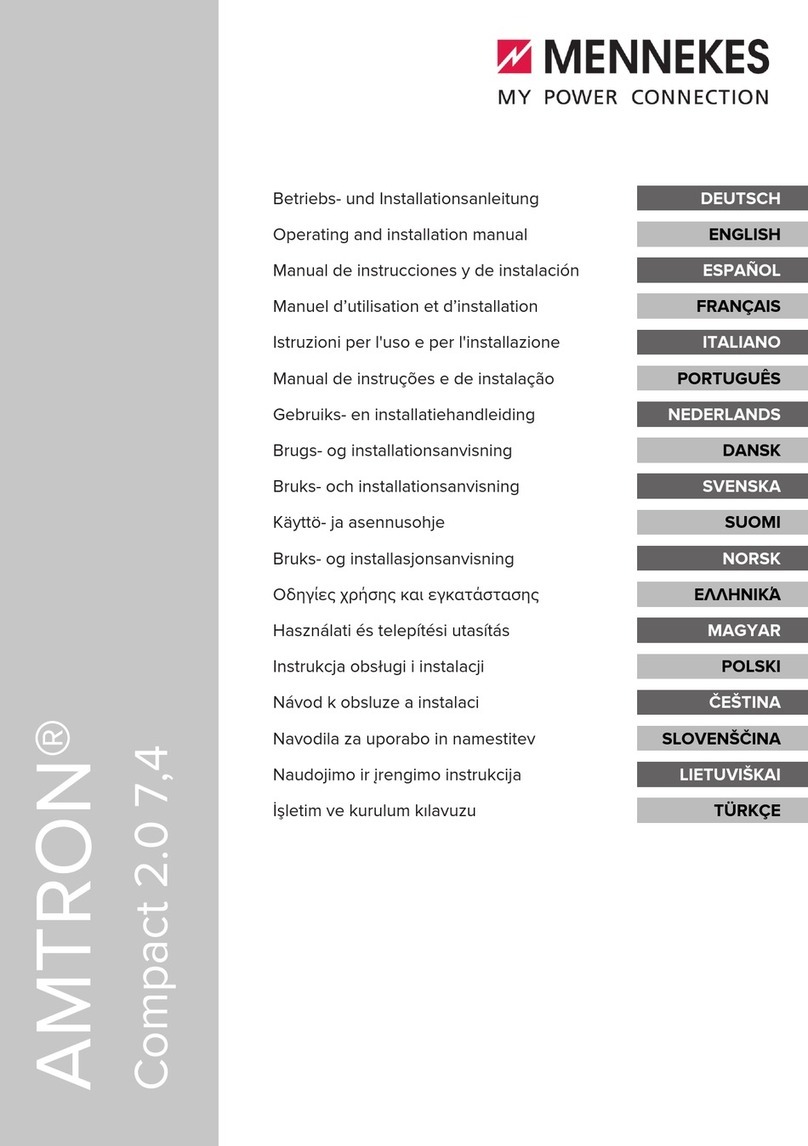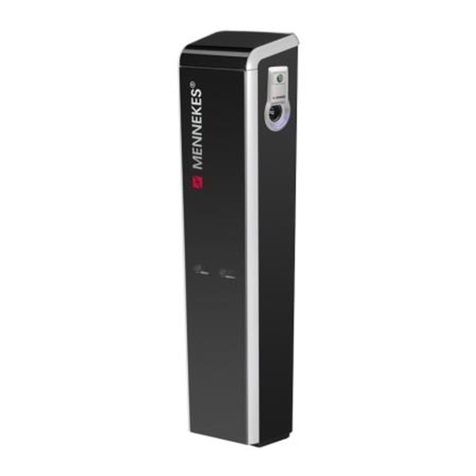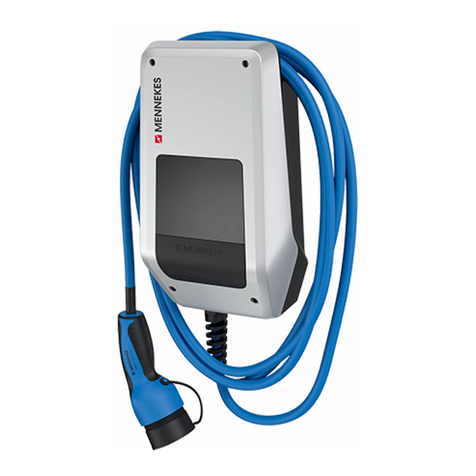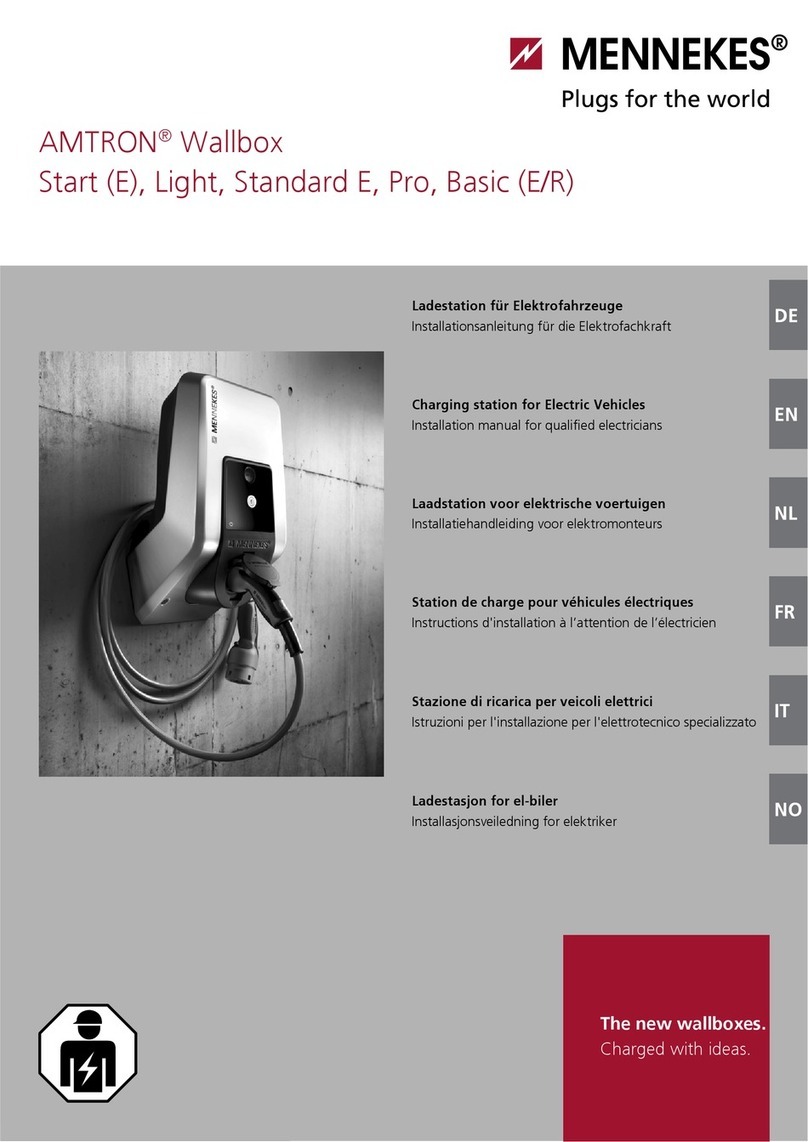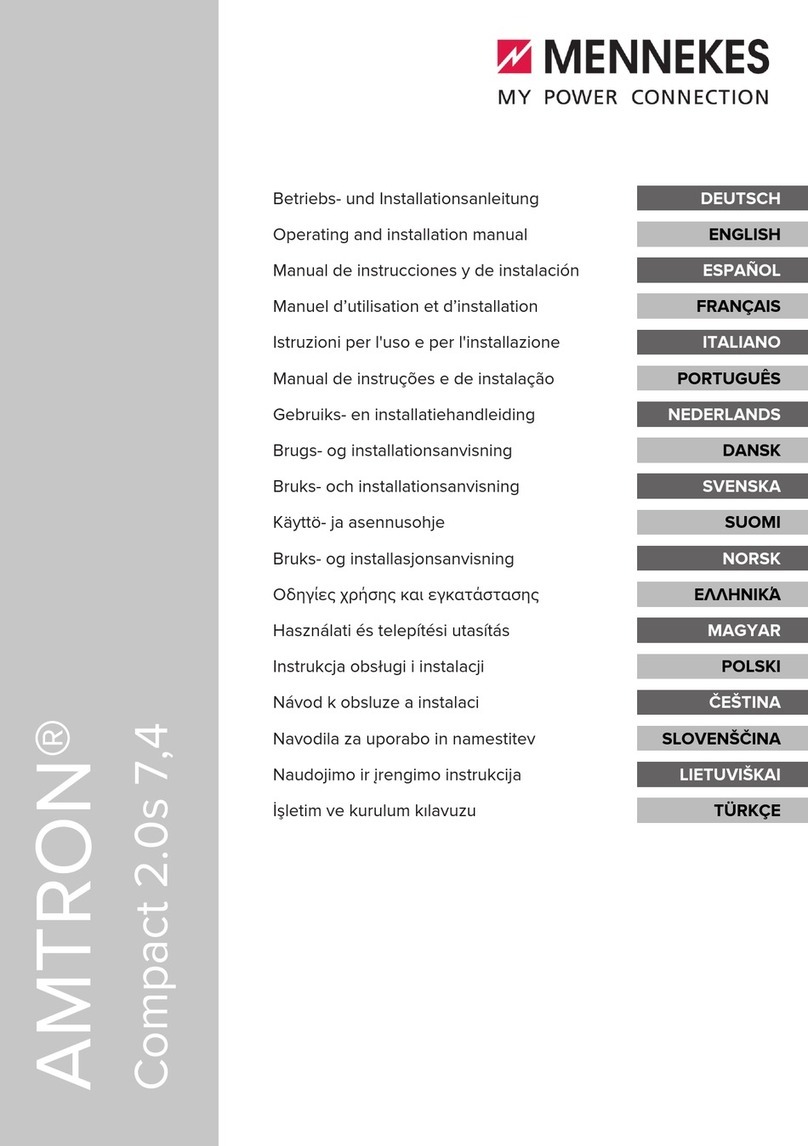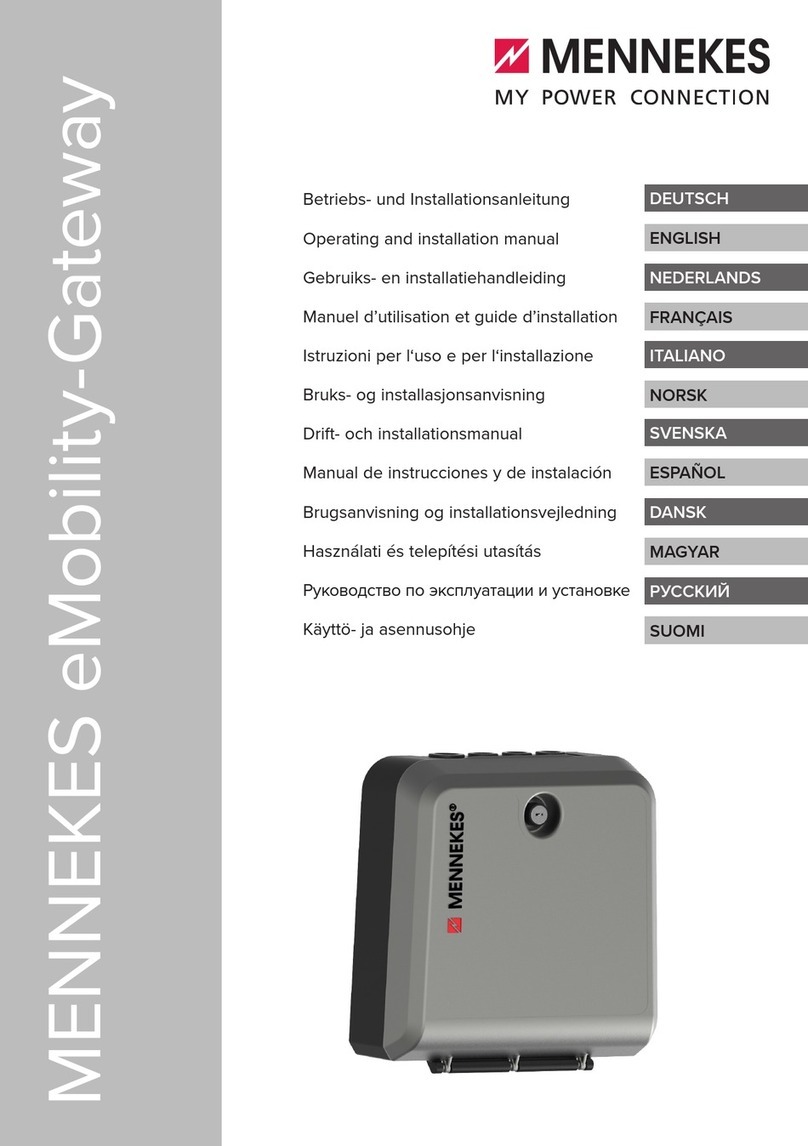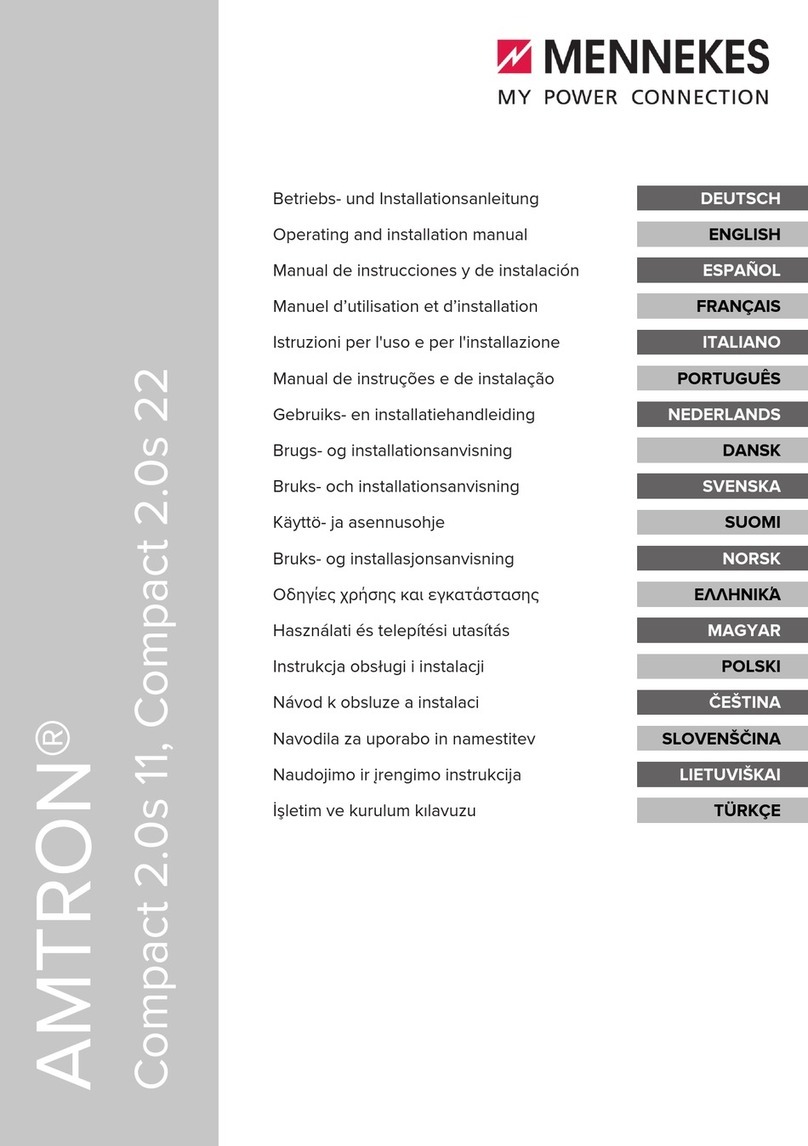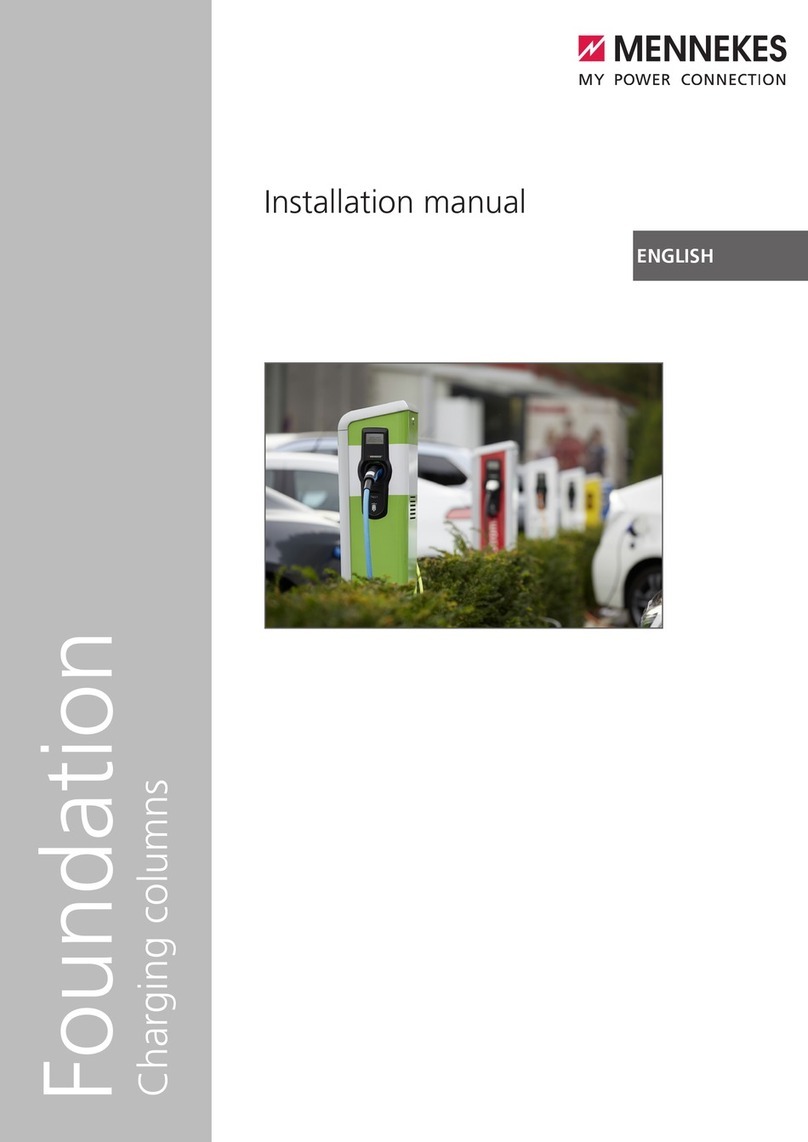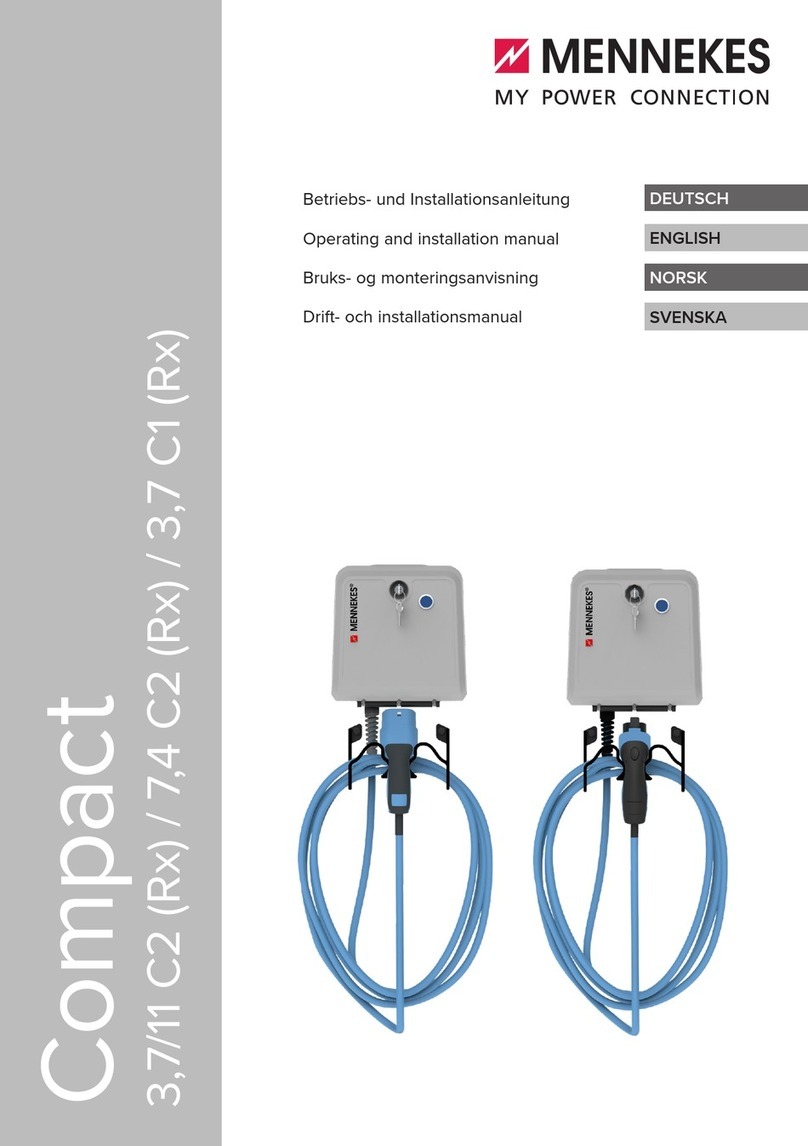
Wechsel ei n-auf zweispaltig
About this Document
© Copyright MENNEKES Elektrotechnik GmbH & Co. KG
Content subject to changes without notice.
This document is protected by copyright. It helps to ensure
the device is used safely and efficiently by the user. The
contents may not be duplicated or reproduced, in whole or in
part, without the prior consent of the copyright holder.
Document symbols
Listing
Check / Result
Tip
Reference to another page in this document
Reference to another document
Table of Contents
1General.................................................................. 2
1.1 Structure of the installation instructions .................. 2
2Safety .................................................................... 2
2.1 General Safety Information ..................................... 2
2.2 Safety Information .................................................. 3
2.3 Intended Use........................................................... 3
2.4 Qualification of Personnel ....................................... 3
2.5 Warranty................................................................. 3
2.6 Returning Devices ................................................... 3
3Product Description.............................................. 4
3.1 General information................................................ 4
3.2 Optional equipment ................................................ 4
3.3 Identification Plate .................................................. 5
3.4 Delivery Contents.................................................... 5
3.5 Assembly................................................................. 6
3.5.1 Exterior view............................................... 6
3.5.2 Interior view................................................ 7
3.6 Components ........................................................... 8
3.6.1 Front panel ................................................. 8
3.6.2 CPX communication box............................. 8
4Technical Data ...................................................... 9
4.1 General data ........................................................... 9
4.1.1 Maximum cable cross-sections at terminals. 9
4.2 Ambient conditions................................................. 9
5Installation.......................................................... 10
5.1 Choice of location................................................. 10
5.2 Unpacking ............................................................ 10
5.3 Opening the charging station................................ 11
5.4 Assembly...............................................................11
5.4.1 Minimum distances................................... 11
5.4.2 Installing the supply cable ......................... 11
5.4.3 Installing the charger station on the wall...12
5.5 Electrical connection.............................................. 13
5.5.1 Voltage supply / supply
network connection..................................13
5.5.2 Safeguarding and personal protection ......13
5.5.3 Terminals ..................................................14
6Commissioning ...................................................15
6.1 Setting the configuration switches ........................ 15
6.1.1 Setting the charging current upper limit....15
6.1.2 Setting the colour code of the LED info bar16
6.2 Switching on the device ........................................ 16
6.2.1 Checking the charging station .................. 16
6.3 Closing the charging station..................................17
7Operation............................................................17
7.1 Charing cable storage ........................................... 17
7.2LED Info bar ..........................................................18
7.3 Multi-function button............................................18
7.3.1 Terminating an on-going charging process18
7.3.2 Re-activating the residual current circuit
breaker and circuit breaker .......................19
7.3.3 Testing the integrated residual current circuit
breaker (RCCB) .........................................19
7.3.4 Acknowledging faults ...............................19
7.4Key switch............................................................. 19
7.5 Charging the vehicle .............................................19
7.5.1 Starting the charging process....................19
7.5.2 Terminating the charging process ............. 20
7.5.3 Power failure during charging process ......20
8Maintenance .......................................................21
8.1 Maintenance plan .................................................21
9Troubleshooting .................................................22
9.1 Troubleshooting by a qualified electrician..............22
9.2 Emergency release of charging plug ...................... 24
9.3 System monitoring ................................................ 24
10 Disassembly, Storage and Disposal .................. 25
10.1 Disassembly...........................................................25
10.2 Storage .................................................................25
10.3 Disposal ................................................................ 25
11 Appendix.............................................................26
11.1 Accesories ............................................................. 26
11.2 Glossary ................................................................ 26
11.3 Index..................................................................... 27
